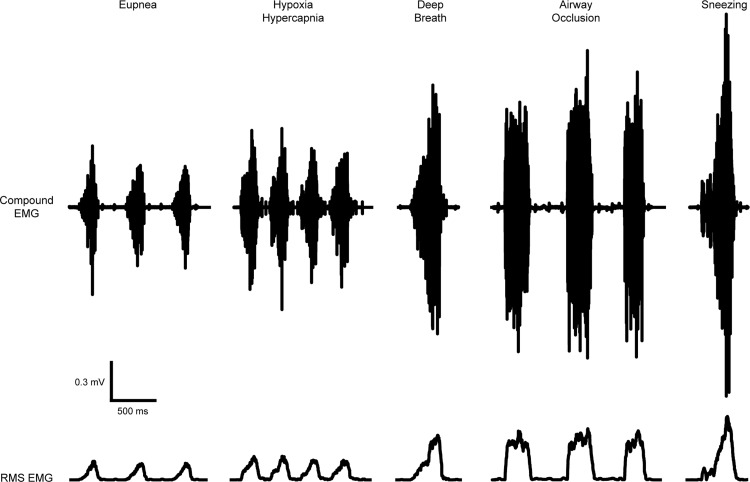Fig. 1.
Representative compound diaphragm EMG recordings and root-mean-squared (RMS) EMG tracings across eupnea, hypoxia-hypercapnia (10% O2, 5% CO2), spontaneous deep breath (sigh), airway occlusion, and sneezing. The main response to hypoxia-hypercapnia was increased respiratory rate (reduced expiratory time). The amplitude of diaphragm EMG activity, as measured by RMS EMG, increased significantly during spontaneous deep breaths (sigh), airway occlusion, and sneezing compared with eupnea and hypoxia-hypercapnia.

